Uncategorized
Vikings, Freemasons, Hooked X & the Knights Templar
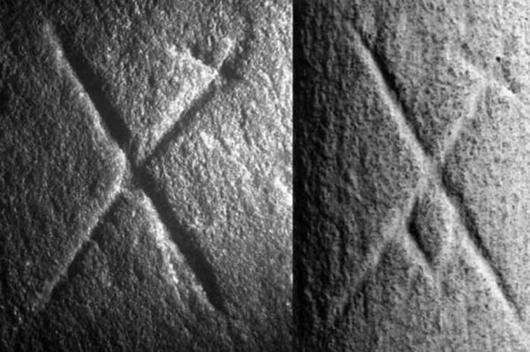
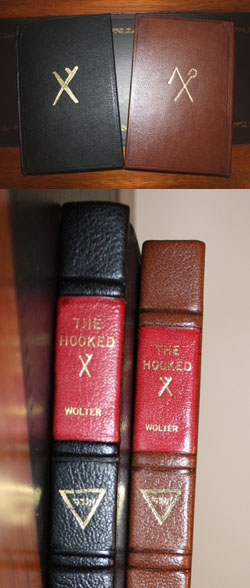


Wolter described how the Knights Templar include direct descendents of Jesus Christ and Mary Magdalene, how the Knights Templar used or directed the Crusades so that they could recover the bones of Jesus and Mary from Jerusalem, and the two thousand year conflict between the Holy Roman Empire and Catholic Church, on the one hand, and the Knights Templar on the other hand. He speculates that the beliefs of the Knights Templar were more duality based, as opposed to the male dominated, hierarchical Church.
Wolter speculates that the Knights Templar were in North America for centuries, to escape religious persecution, that they found their beliefs often rather compatible with those of the American Indians, and that they inter-bred for generations (all before the arrival of Christopher Columbus in 1492.)
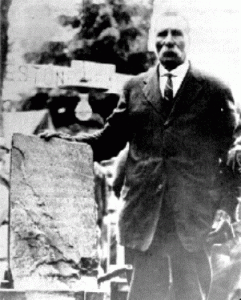
The centerpiece of his revelations is that controversial, even contentious artifact known as the Kensington Rune Stone
For those who are unfamiliar with it, this is a 200-pound greywacke sandstone stele found by Swedish immigrant farmer, Olof Ohman, while clearing his land in the largely rural township of Solem, Douglas County, Minnesota, during September 1898. Lying face down and entwined in the roots of a stunted, 30-year-old aspen, the 30-by-16-by-six-inch slab was covered on its face and one side with some sort of runic writing. Ohman brought it to the nearest town, Kensington, where his find was displayed at the local bank.
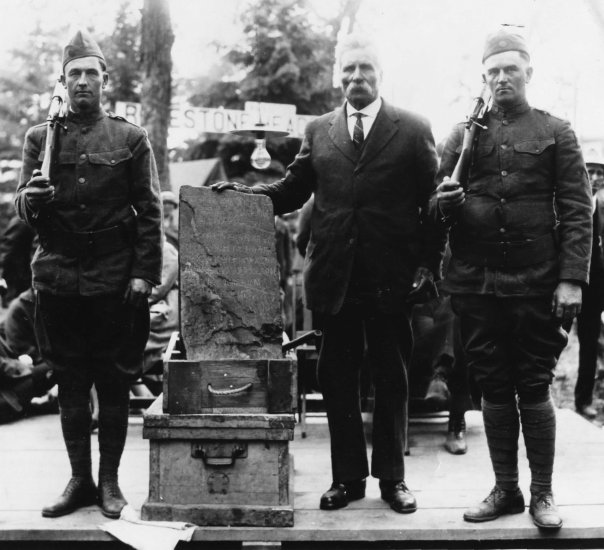
A badly flawed copy of the inscription was forwarded to the University of Minnesota, where a translation was attempted by Olaus J. Breda. It would take more than another 100 years for scholars, correcting for the imperfect copy, to properly translate the text. The front face reads, Eight Gotlanders and 22 Norwegians on (this) reclaiming/acquisition journey far west from Vinland. We had a camp by two (shelters?) one days journey north from this stone. We were fishing one day. After we came home we found 10 men red with blood and death. Ave Maria. Save from evil.
Inscribed on the side of the stone are the words, There are 10 men by the sea to look after our ships 14 days journey from this island. Year 1362.

MYSTERIOUS TOWER EXPLAINED
He cites dating procedures applied in 1997 to the structure by Danish professor Andre J. Bethune, whose carbon-14 analysis indicated that, in Bethunes words, the Newport Tower was standing in the years 1440 to 1480. Wolter shows that its close resemblance to sacred buildings in medieval Europe and the Near Eastsuch as Scotlands mid-12th-century Eynhallow Church in Orkney or Jerusalems Templum Dominidefines the Newport Tower as a baptistery additionally employed for navigational purposes.
Wolter quotes a prominent researcher, the late James Whittall, who pointed out that the tool marks created in the dressing out of the stonework (on the Newport Tower) can directly be related to tools before 1400. These marks are unique and unknown when compared to tool marks noted in Colonial stonework. . . . The single and double-splay windows have prototypes in medieval Europe and in the northern isles of Scotland in the 1300s in churches and the bishops palace in Orkney. . . . The walls were covered with a plaster stucco finish, both interior and exterior. Stucco finishing started in the 1200s and is a feature known in Orkney and Shetland. . . .There is no archeological parallel in Colonial New England for the Newport Tower and its specific architectural features.
These and numerous other supporting details leave no doubt about the towers pre-Columbian provenance. Wolter goes to describe several other pieces of evidence for the medieval European impact on this continent, and for the presentation alone of these otherwise little-known artifacts, his book is especially valuable. To him, they are all fragments of an interrelating mosaic, the final image of which tends to reveal a post-Templar interest in North America.
Traces of this shadowy presence are scattered throughout a diverse collection of stone inscriptions and archeological sites from Minnesotas Kensington Rune Stone to similar texts and engraved illustrations in New England.

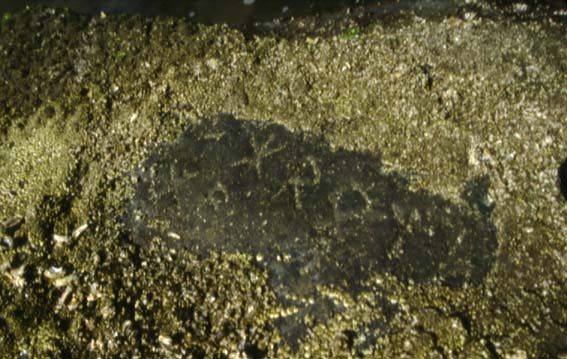
Sitting in shallow water, the 8-foot-long boulder sported unusual markings that were typically visible only at extreme low tide. Goodhue said she heard people say the markings might be ancient runic characters left by Viking or Nordic explorers.
Even so, Goodhue, who is now 89, says she didnt give much thought to the significance of what people call the Narragansett Rune Stone or Quidnessett Rock. That is, until a week or so before Christmas 2011 when her neighbor Paul Roberti, a commissioner with the Public Utilities Commission, asked her to host a neighborhood meeting to talk about the boulder with Scott Wolter, a forensic geologist from Minnesota. Though Wolter has come under fire from critics who see his theories as over the edge, he is considered an expert by many on the subject of runestones, having produced documentaries for the History Channel and written two books. In The Kensington Stone: Compelling New Evidence, he writes about why he believes that a stone with runic lettering found in 1899 by a farmer and his two sons on a hill in Minnesota was not the hoax that critics claimed, but a real artifact made by visitors from Europe a century or two before Christopher Columbus set sail for the new world.

In the geologists view, the Narragansett Rune Stone was such an important piece of history perhaps even more important than Plymouth Rock that it was imperative that it be moved to a dry, safe place to protect it from erosion and vandals and to allow experts to examine it. Some participants at the meeting at Goodhues home in 2011 say that nearly everyone agreed except for the neighbor whose property was closest to the stone, billionaire businessman Timothy Mellon.
Mellon, an heir to the Mellon family fortune, a founder of the Heritage Foundation and the CEO of Pan Am Systems, had, along with his wife, Patricia, bought two large parcels of land on the waters edge in 2008 for $5.6 million. Mellon has been unavailable for comment.
Roberti, the public utilities commissioner, worked for 17 years in the attorney generals office and has considerable expertise on federal and state jurisdiction over submerged lands. He says its easy to see why Mellon, who owns properties in other states, might have thought the rock belonged to him since in some states the property owners rights extend out into the water. In Rhode Island, however, the state owns the land below the median high tide, putting the rock under state jurisdiction.
In the spring of 2012, a pair of amateur archaeologists Stephen DiMarzo Jr., of New Bedford, the Rhode Island chapter coordinator for the New England Antiquities Research Association, and his brother Peter DiMarzo of Newport applied to the Coastal Resources Management Council for permission to move the rock to protect it and put it on public display.
Stephen DiMarzo, a former Teamster who delivered cupcakes for the Hostess Baking Co., said he first learned of the Narragansett Rune Stone in 2009 when he heard Wolter talking about it on the late-night talk radio show Coast to Coast AM. After talking with Wolter about the stone, the DiMarzos moved ahead with their application, though they found that getting state approval wasnt easy. For one, Edward Sanderson, executive director of the Rhode Island Historical Preservation & Heritage Commission, wanted to know where the stone would be relocated.
The brothers worked out an agreement with the priests at the nearby Scalabrini Villa Health Care Center that the stone would be put on display there with the understanding that it would not be physically altered without state permission.
Janet Goodman, who inspected the stone early in 2012 in her role as coastal geologist for the CRMC, says the boulder had been on land when it was first photographed in 1939 but gradually became surrounded by water as storms and hurricanes ate away at the shore.
Stephen DiMarzo says he believed his application was moving toward approval when he got some unsettling news on July 2, 2012. A kayaker, James Doyle of Old Lyme, Conn., reported that he had viewed the stone in early June but discovered three weeks later, when he returned with his girlfriend, that it was gone.
The stone had been stolen, in DiMarzos view, and he was outraged. Roberti wrote to his former colleagues at the attorney generals office, saying he thought the office had an obligation to investigate. Roberti also participated with Wolter in a History Channel documentary tied to the stones disappearance which aired in February of this year.
One question: Who could have had the capability to remove a 212-ton rock without anybody noticing?
To find out, Detective Sheila Paquette, of the Department of Environmental Management, started knocking on doors last August. One neighbor said he had heard machine-like sounds one evening that June and wondered if that might have been the night the stone was taken.
Paquette says that when she went to interview Mellon, he shut the door and told her to see his lawyer. Mellons lawyer is former Attorney General James ONeill, who has not returned calls from The Journal regarding the stone.
The location of the stone remained a mystery for more than eight months until a man, whom Attorney General Peter Kilmartins office refuses to identify, advised the state lawyers that he knew where the stone was and how to get it back. Amy Kempe, a spokeswoman for Kilmartin, says on April 16 the rock was returned on a flatbed truck to the grounds of the University of Rhode Islands School of Oceanography in Narragansett where officials are keeping it under wraps in an undisclosed location, as archaeologists decide what to do with it.
Wolter, the Minnesota forensic geologist, said he was extremely upset when the stone was taken.
Im just glad that whoever took it came to his senses. Its a cultural resource for everyone.
And just what do the markings on the stone mean? Wolter maintains that the existence of a hooked X on one of the two lines of lettering shows that whoever carved it was associated with the Knights Templar, a secretive sect in Europe whose members saw themselves as the protectors of the Holy Grail. Legend has it that the grail is the sacred cup used by Jesus at the Last Supper, but Wolter runs with another theory popularized by Dan Browns novel The Da Vinci Code, in which the grail is seen as a reference to the bloodline resulting from a marriage between Jesus and Mary Magdalene.
Wolter says there is little doubt that the Knights Templar, facing suppression by church authorities, would have wanted to escape even if it meant traveling across an unchartered ocean.
Im not trying to offend anybody. Im just trying to get to the truth of real life. I believe Jesus is a real historical person, a power person, who was teaching the ancient mysteries, and as such he was a threat to the Romans, Wolter said in a recent interview.
Still, there are other stories surrounding the Narragansett Rune Stone that dont involve bloodlines or grails. Suzanne Carlson, writing in the Journal of the New England Antiquities Research Association, found in the runic lettering symbols referring to gift, riding, pasture and homeland. She suggested it might have been a boundary or claim stone.
On the other hand, Valdimar Samuelsson, an engineer of Icelandic ancestry, says he was intrigued by Carlsons comment that the characters also seemed to refer to a Skrauma, or screaming river. There is a river Skrauma in Iceland, he says, which many believe was the place where Viking explorers set out to sea.
Rod Mather, a professor of maritime history and underwater archeology who has recently investigated the rock at state request, thinks the chance that the Narragansett Rune Stone and the Kensington Runestone were crafted by the Vikings, or any other early explorers, is miniscule.
We really have only one piece of authenticated physical evidence of Vikings being in this part of the world, and that was the village of LAnse aux Meadows in the northern part of Newfoundland, he says. There is no verifiable evidence they were anywhere else.
Mather said its more likely the stones were made in the late 19{+t}{+h} century by immigrant settlers from Scandinavia who felt moved to create runestones with hooked X and all to celebrate their Scandinavian heritage.
In my professional opinion thats what happened, he said. Of course with all of these things, you are not going to convince everyone … . But whether the stone was carved in 1890 or a thousand years ago, we need to treat it as a historical artifact. Just like the Shroud of Turin, it needs to be preserved. Now that its back, the DEM investigators have permitted only a small group of individuals, including Mather, to see the stone.
Roberti, who originally asked that the stones disappearance be investigated, said he has found nothing in state law to support a criminal charge against someone who takes a rock from Rhode Island waters, especially a rock whose value has never been ascertained.
Paquette, the DEM detective, said that once archaeologists and other experts have examined the rock for indications of when it was engraved, she hopes it can be put on public display.
It needs to be preserved and protected. We all know how it only takes one idiot to try to destroy it, Wolter said in a phone. I personally would love to see the stone brought to Touro Park in Newport on the same grounds as the Newport tower.
DiMarzo, however, thinks the stone should be kept closer by, and insists that the Scalabrini Villa would be the best location. He said that while he had been angry that the stone was taken, he now thinks the person did everyone a favor.
He did what we were all trying to do in the first place. He got it out of the water.
What makes the hooked x and several other Runic oddities interesting is that they are consistent with Runes found in other writings and establishments of the Knights Templar, a controversial group in their own right. And here is where the plot thickenson Friday, October 13, 1307, the Templars were rounded up and imprisoned by king Philip the Fair. Part of the Templar mythos is that they had treasure and wealth beyond imagination, and while it is true they were an incredibly powerful military organization and some of the earliest bankers, no Templar treasure has ever been found. Well, Phil had some debts, probably in debt to the Templars as well, and thought he would get rid of the Templars and take all of their money. Now, he had practice at this sort of forced compliance when he blackmailed Pope Boniface VIII into doing his bidding, and it seems Philip perfected his technique with his raid on the Templars. However, only a fraction of the order was apprehended, and there is much speculation as to what happened to the rest of the Templars. For those who remained, they were tortured into guilty admissions, including Jacques de Molay and Geoffoi de Charney, the last Templar grand masters who were slowly roasted over a small fire, which took them several hours to die.
While it is known that some Templars went to Scotland, and even aided Robert the Bruce in his fight for Scottish independence, and some think to Portugal also, others believe that the Runestone suggests Templar movements in North America. It was no secret that the continent was there; in 1960 it was proven that Viking explorers hit the continent on the tip of Newfoundland around the year 1000. So it is entirely feasible for explorers to get inland around Kensington. Whether Templars or not, the explorers could have either went around Newfoundland through Hudson Bay and down some river ways into Duluth; or they could have gone through the Great Lakes into Lake Winnipeg and hit Kensington that way. Either way is consistent with the time frame listed on the Runestone.
Many think the stone is a land claim; if so, it would be pertinent to leave markers or clues that lead back to the original claim. And it was a big claimthe medieval equivalent to the Louisiana Purchase, just with some slight variation. What was found around the Ohman farm seems to justify such a theory, as there were large stones with holes in them. Many though Ohman drilled them into the stones to place dynamite in the stones to remove them, but he never made any such claim. However similar stones were found around Viking settlements around Newfoundland, and on the Ohman farm the Kensington Runestone triangulates perfectly within the area of the stones.
There are also several petroglyphs around upper Michigan and around the area of the Runestone done by the indigenous people that are suggestive of European items and civilization. There is also a petroglyph resembling a Templar cross, and venturing into the even more bizarre are the several artifacts found around Narrangansett Bay and the Templar Tower in Rhode Island. If you plot a line from the Tower straight west it directly intersects the Kensington Runestone.
Keeping with the bizarre theme, it has also been reported that prince Henry Sinclair had been exploring or attempting to explore the North American continent around the year carved into the Runestone, 1362. The Sinclair family were aides to the Scottish royal family, and the Siclairs were obviously powerful. Henry, the prince, just so happened to be a Templar knight. Go figure…anyway, it is rumored he made it to New England, encountered the Mikmaq tribe, and kind of set up shop there. It is interesting when the Mikmaq flag and the Sinclair family flag are compared. If they are placed side by side, they are almost an exact match. Also, a small island off of the coast of Nova Scotia is populated with oak trees, purported to be planted by Sinclair himself in order to distinguish and find the island, because oak trees are not indigenous to that area. Why would he need to do that? Remember how Philip wound up empty handed? It has been suggested that Sinclair took the Templar treasure and buried it there.
Daniel McGinnis discovered a small patch of ground slightly sunken in around 1795. With the help of a couple of friends, McGinnis excavated that portion of land, but gave up after thirty feet. Eight years later digging resumed, and it was discovered that wooden logs and other detritus layered across the pit every ten feet. At ninety feet they found a stone with symbols inscribed on it saying forty more feet and treasure! While more elaborately phrased, that message prompted a further dig which flooded the pit. Now dubbed the Money Pit because of the prominent investors (such as FDR, John Wayne, and Errol Flynn) who have sunk money into the pit, it has remained flooded to this day. Nonetheless, it is widely thought to hold the Templar treasure.
While Olaf Ohman was never quite vindicated in his lifetime, many scholars and researchers, especially Scott Wolter and his associates, have provided interesting evidence and new opportunities and information that may ultimately help rewrite history. And it all started here in the Midwest with a farmer and a strange stone.
